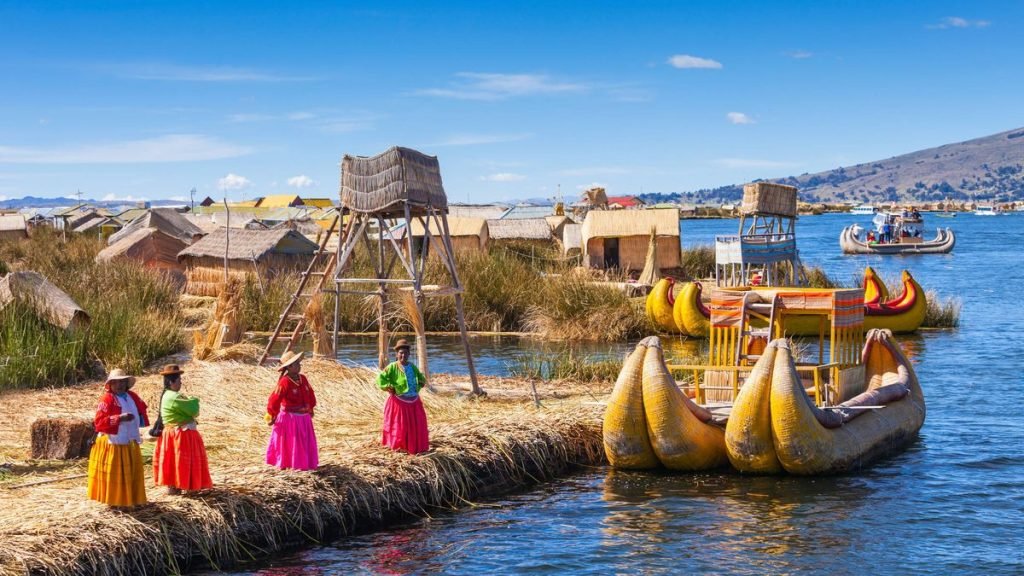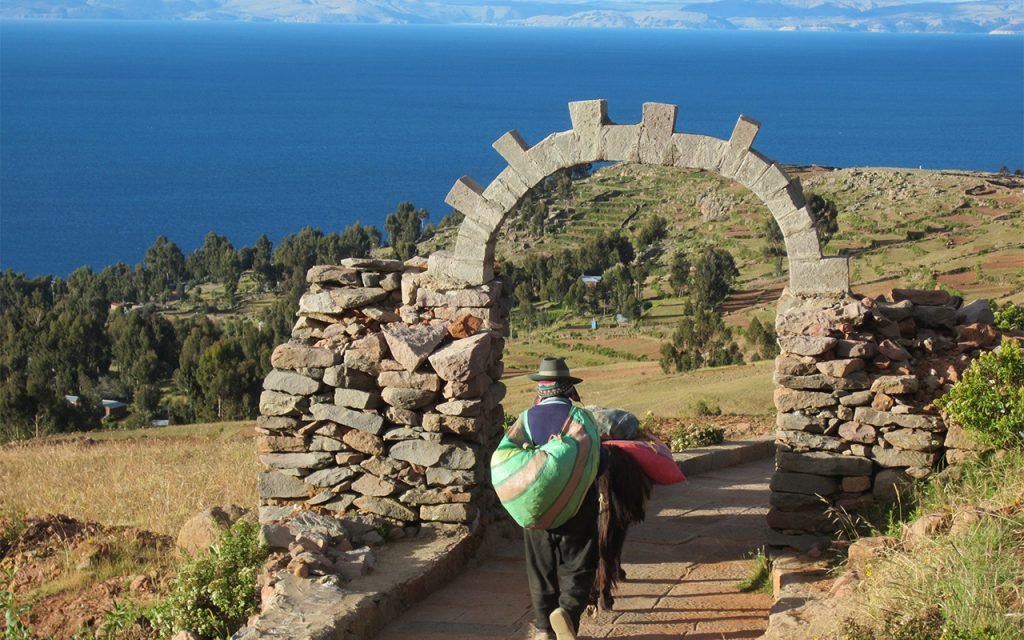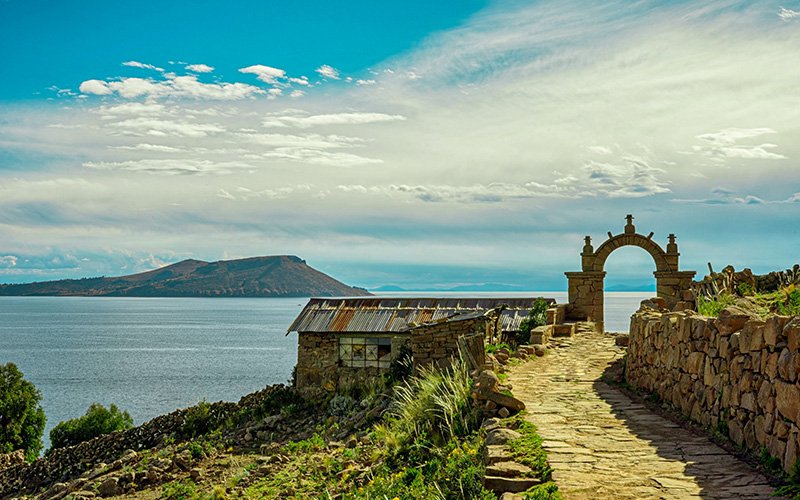Experiential tourism in Puno is crowned as one of the most popular tourist activities to do in the area. Puno is a city full of magic which has a great cultural diversity, legends, traditions, and impressive multicolored festivals that visitors can enjoy during their stay. It is a city that prides itself on its folkloric traditions and its fervor towards the Virgen de la Candelaria, which is known as the largest festival of the highlands.
The city has great tourist potential thanks to its scenic beauty, such as Lake Titicaca, considered a natural heritage site and the highest navigable lake in the world. There is no reason to miss all the richness that this wonderful city has to offer, and what better way to delve into its traditions than through experiential tourism in Puno.

How does experiential tourism in Puno work?
Thanks to the initiative of the inhabitants and the government, experiential tourism has been developed in Puno. Currently, this tourist activity is carried out through the islands of Uros, Taquile and Amantani. In order to show the world their ancestral and living culture, the communities have improved their facilities to receive tourists without losing the essence of their way of life and also to offer a unique and unforgettable experience to visitors who dare to take these tours.
The families that offer the experiential tourism service are trained by the state and the organizations in charge of tourism in Peru, to ensure that tourists have a pleasant experience and take home a special souvenir of the welcoming Altiplano area and culture.
In addition, experiential tourism in Puno has many positive points that have an impact on today’s society, for example, it has helped the local people to improve their quality of life as well as the development of the communities that benefit from it. The adventure begins on the shores of Lake Titicaca, where tourists take the motor boats that will take them to the nearby islands, where their adventure begins in Puno.
Experiential Tourism in the Uros Island
Uros Island is one of the most visited destinations nationwide, thanks to the peculiarity of its floating islands. There are more than 100 islands that make up this archipelago, where tourists can enjoy their time living with the local people.
The inhabitants call themselves the black-blooded men, as they can survive big temperature changes, cold nights and days with strong solar radiation. During the stay in the Uros Island, you can appreciate the houses, the school built on the islands and the small recreation center for children.
Tourists can learn techniques of the arts used by the villagers to work the totora, an aquatic plant that grows in the lake and is the main material that makes up their daily life, from food to build boats, during this experience you will learn how the totora is cut, how to build a floating island, how to weave and design the beds in which they sleep, known as “quesana”. You can also learn more about how they make alpaca textiles. Fishing is also part of their economy, so tourists can learn how to set up nets and go fishing for species such as carachi, silversides and catfish.
EXPERIENTIAL TOURISM ON THE ISLAND OF AMANTANI

The island of Amantani is the largest island in Lake Titicaca, it is located at 3,817 meters above sea level, and consists of an area of 9 km2. It is home to 8 communities: Santa Rosa, Occosuyo, Villa Orenojon, Colqui Chaqui, Lampayuni, Sancayuni, Incatiana and Villa Orenojon. Amantani has more exuberant vegetation and nature than other islands, as well as springs that favor efficient agriculture. On the shores of the lake, the climate is more temperate, which allows for differentiated and better adapted crops.
Experiential tourism on the island of Amantani is managed on a communal basis, with the villagers being responsible for transportation in boats to the islands. Upon arrival, a family will provide you with lodging and three meals a day based on local foods such as trout and silversides. You will also have the opportunity to participate in activities shared with the locals, usually consisting of activities related to the culture and daily life of the area. Thanks to a cultural promotion program, residents teach tourists the creation of handicrafts and the characteristic handicraft weaving.
Visitors will be able to witness shows related to the Tiahuanaco culture, a civilization that inhabited this area, and will even be able to establish contact with a Yatiri (shaman in Aymara). The minimum recommended duration for this experience is 2 days and 1 night, but if you wish to immerse yourself even more in the activities, 3 days are recommended, this way you will be able to have a complete experience of what it means to be an inhabitant of Amantani.
EXPERIENTIAL TOURISM IN TAQUILE ISLAND

This beautiful island is located 2 and a half hours from the port of Puno, and its official language is Aymara, the third official language in Peru.
Until the 1970s, Taquile was isolated and had very little communication with other islands, but thanks to the work of religious entities and private organizations, the community was gradually integrated into Peruvian society. In the 1980s, the villagers organized visits to the island for experiential tourism.
Taquile’s experiential tourism is very well organized, being the community in charge of managing all the activities for the common benefit. Upon arrival, you will receive a warm welcome with a buffet that offers delicious dishes of the local gastronomy, such as trout, quinoa and ocas, among other locally grown and cultivated products.
During the days of your stay, a family will provide you with a comfortable room with all the necessary services. During the mornings you will be able to visit the archaeological sites of the area, guided by the villagers themselves. During this visit, a payment is made to the PACHAMAMA, a cultural activity of great importance within the local and Peruvian traditions, it is a moment in which thanks is given through offerings to the earth, which is considered a mother for both the Aymara and Quechua culture.
Textiles are a very traditional part of Taquile, since within the Quechua and Aymara cultures, weaving is of great importance as an essential element for their cultural expression. Their textiles are very colorful and represent the union between the human and the divine. In addition, according to tradition, textiles also tell stories of rituals and ceremonies. Tourists will have the opportunity to learn about weaving and acquire unique garments that can be kept as a great souvenir of the experience.
To get to the island, it is necessary to purchase a 25 soles ticket for round trip transportation.
NOTE: In 2005, UNESCO declared the weavings of Taquile as a Masterpiece of Heritage.
Experiential tourism in Puno is developing optimally. Every year, the authorities provide training to the communities to improve services and implement quality management. Experiencing one or all three islands is truly an unforgettable adventure that we recommend to all visitors, each with something special. The villagers are open to teaching about their culture and await tourists with enthusiasm.




